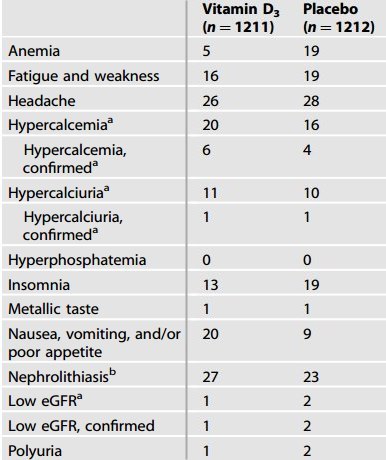4,000 IU of Vitamin D is too small a dose to help Obese - RCT
Safety and tolerability of high-dose daily vitamin D3 supplementation in the vitamin D and type 2 diabetes (D2d) study—a randomized trial in persons with prediabetes
European Journal of Clinical Nutrition; https://doi.org/10.1038/s41430-022-01068-8
Karen C. Johnson, Anastassios G. Pittas, Karen L. Margolis, Anne L. Peters, Lawrence S. Phillips, Ellen M. Vickery, Jason Nelson, Patricia R. Sheehan, David Reboussin, Saul Malozowski, Ranee Chatterjee & D2d research group
Background/Objectives
Routine use of vitamin D supplements has increased substantially in the United States. However, the safety and tolerability of long-term use of high-dose vitamin D are not known. We assessed the safety and tolerability of high-dose, daily vitamin D3 in the vitamin D and type 2 diabetes (D2d) study.
Subjects/Methods
In total, 2423 overweight/obese persons with prediabetes were randomized in a double-blind manner to either 4000 IU of vitamin D3 (the tolerable upper intake level for adults by the National Academy of Medicine) taken daily or matching placebo. All participants were included in this analysis. Incident adverse events (AE) were ascertained 4 times a year at in-person visits (twice a year) and interim remote encounters (twice a year) and were defined as untoward or unfavorable medical occurrences. Serious adverse events (SAE) included death, life-threatening events, and hospitalizations.
Results
A total of 8304 AEs occurred during 3 years of follow-up and were less frequent in the vitamin D group compared to placebo (Incidence Rate Ratio [IRR] = 0.94; 95% Confidence Interval (CI) 0.90, 0.98). The overall frequency of protocol-specified AEs of interest, which included nephrolithiasis, hypercalcemia, hypercalciuria, or low estimated glomerular filtration rate, was low and did not differ by group. There were no significant between-group differences in total SAEs (IRR = 0.96 (0.81, 1.14)).
Conclusion
Vitamin D3 supplementation at 4000 IU per day was safe and well tolerated among overweight/obese participants at high risk for diabetes who were appropriately monitored for safety. In this population, this dose of vitamin D3 did not increase risk of AEs or SAEs, including those previously associated with vitamin D such as hypercalcemia, hypercalciuria, or nephrolithiasis.
ClinicalTrials.gov NCT01942694, prospectively registered September 16, 2013
📄 Download the PDF from VitaminDWiki
Note: FEWER advese events in the Vitamin D group

VitaminDWiki - Overview Obesity and Vitamin D contains
{include}
{include}
VitaminDWiki - Obesity is associated with low Vitamin D (and treated by D as well) – Aug 2019 has
{include}
